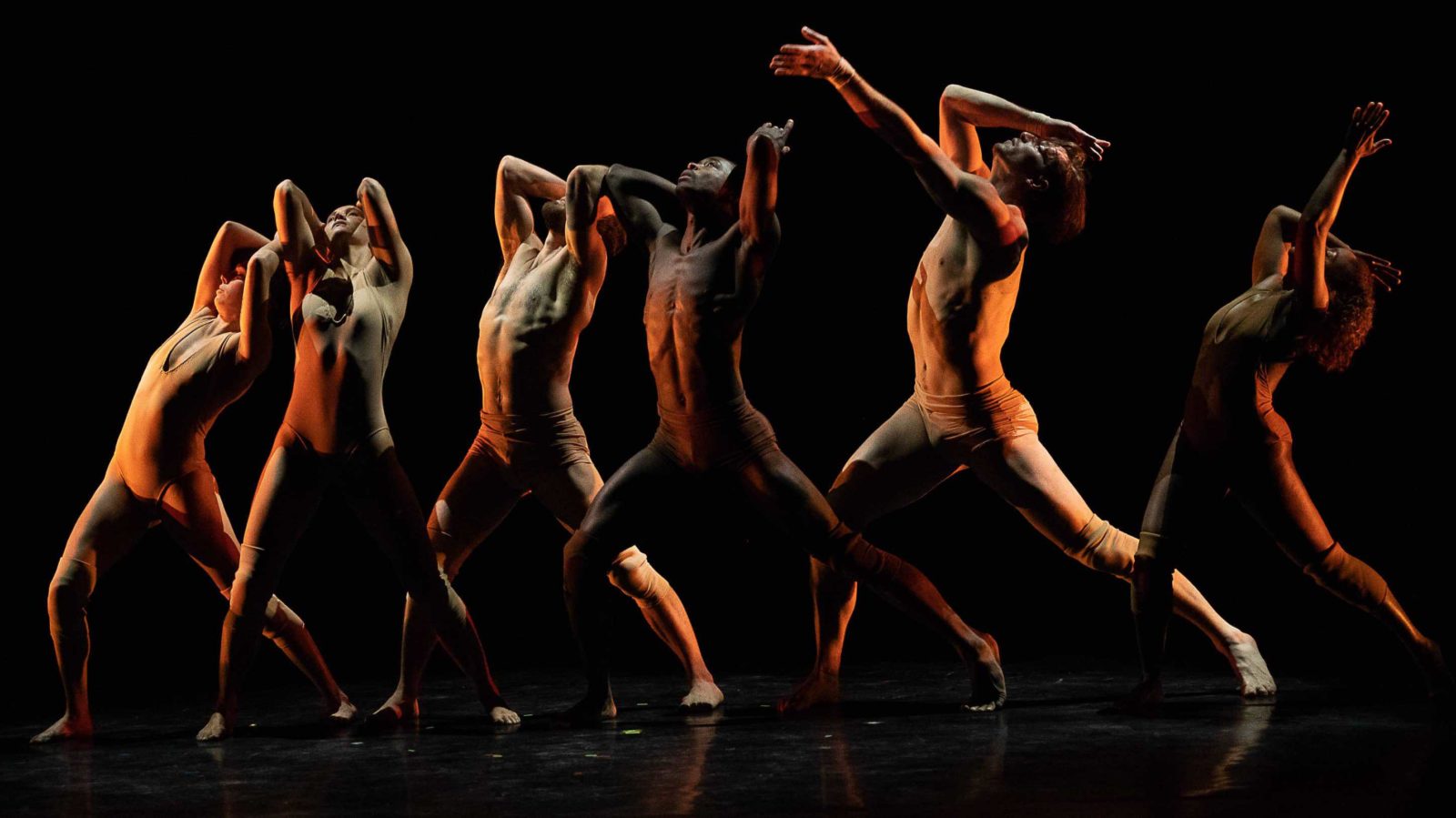They swing like saplings — roll and lift and orbit. Six dancers blend into three creatures, four-armed like dancing Shivas. They are wearing spare clothing the colors of their skin and moving in sunlight, to the sound of quiet strings and calling birds.
Pilobolus has performed around the world for 48 years with their organic and full-bodied movement, and this year they are bringing together work that spans more than 20 years of their history in Come to Your Senses at the Mahaiwe Performing Arts Center, including Branches, a work they created for the Inside / Out Stage at Jacob’s Pillow in 2017.
“We have always been known as the outsider dance company,” said Renée Jaworski, co-creative director and choreographer, speaking by phone from the company’s home in the small town of Washington, Conn., in the Connecticut Berkshires.
They have also always loved moving outside. They live in the country, she said, and have always been drawn to nature for inspiration.
They have even named the dance company named after a fungus. The genus pilobolus has a transparent stalk and a balloon-like tip that acts as a lens, pointing to the sun and focusing its light.
And lenses have come into some of their newest work. In a collaboration with Radio Lab in New York City, they take on light and the wonder of sight. In shadow, dance and written word, with anatomical models and help from the audience, they look into the evolution of the eye.
In Branches they return to their roots, she said — no props, little clothing and abstract movement that began with a walk in the woods. The took a hike on a mild day at home, and they stayed quiet, walking slightly apart to look closely at saplings and old trees and listen to the wind, the birds and the river.
They felt the dirt under their feet, and they watched for the stirring of life. Nature can be absurd in some ways, she said, funny, especially animals.
Then they came home and started talking. And then they started moving.
A new work often begins that way, Jaworski said. The company sits down together. They may come in with an idea or a story, a relationship, a suggestion of a world, a poem or music that wants to be choreographed to.
And they play with it. They improvise, to music or in silence.
“That’s what happens in a room with talented people,” she said, relishing the lift — “when the entire room goes yeah, and you feel the buzz when an idea catches.”
This kind of shared exploration goes back to the company’s roots, she said. Pilobolus started at Dartmouth in 1971, when a cross-country skier, a pole vaulter and a fencer wound up in a dance class with professor Alison Chase.
“Dartmouth wasn’t co-ed then,” Jaworski said, “and she was one of the few women on campus, and she was young and beautiful … and they needed the PE credit.”
Chase figured these young athletes did not have a background or strong interest in formal technique, but they moved well. They were physical and intelligent — they were also majoring in English, political science and medicine, between them.
She started teaching them to coordinate and expand on movement they knew, running, jumping, rolling.
They would hold to each other in solidarity, Jaworski said, and that instinct led to a weight-sharing the group has become known for.
“We approach partnership in a philosophical and physical sense,” she said. “We rely on each other; one person is not bearing all the weight all the time. It’s a shared weight and a shared experience.
“We create forms that wouldn’t exist if we weren’t leaning in a certain way. It’s about creating a new center, creating a new entity, a new animal.”
One of their newest pieces in this show brings three women together in the company’s first female trio,Warp & Weft, with new music by indie rocker Thao Nguyen. The movement reveals each individual woman, Jaworski said; they are each discovering themselves.
A duet, Symbiosis, winds intimately into need and reliance and trust. A man and a woman perform it, she said, simply because a woman will not often have the upper body strength for some lifts. They intertwine and move together. But she would not say they are lovers, though people seeing the work for the first time often assume that.
“If you’re climbing on someone, wrapping around someone, (people think) it must be sexual. Here in many ways it isn’t.”
It’s sensual, fluid and shared.
The oldest work here expands on that trust. Gnomen is a men’s quartet from 1997.
“It is also about relationships,” Jaworski said, “how these four men support and push each other. So many people say I’ve never seen such strong men be so gentle towards each other.’ … They’re energetic, funny, etherial, lyrical and athletic, and beautiful.”
In a very different form, they also touch on lenses and light. A gnomon is the upright element in a sundial. It casts a shadow to tell time by the sun.

